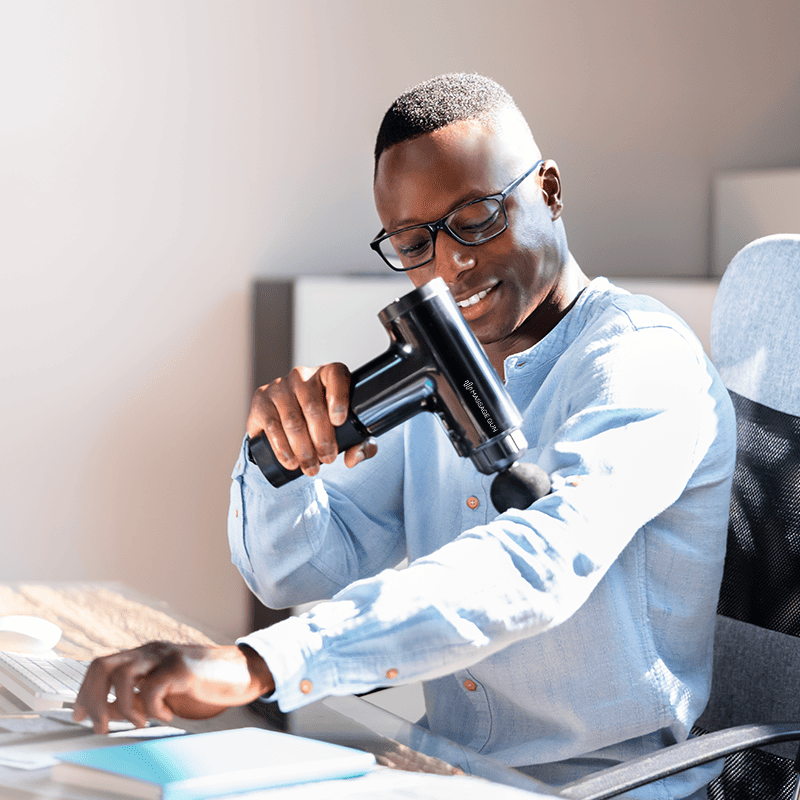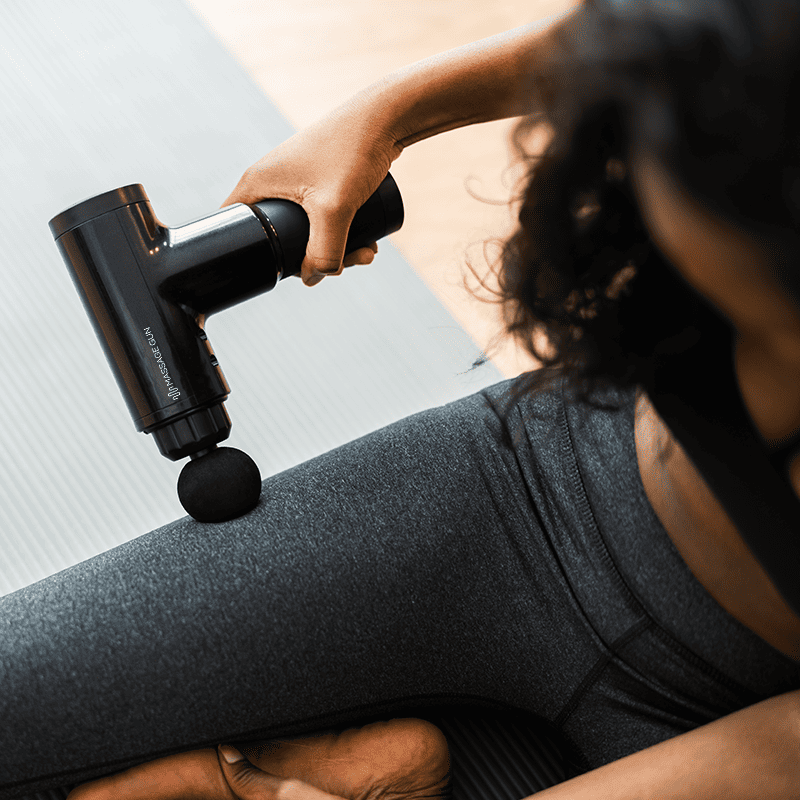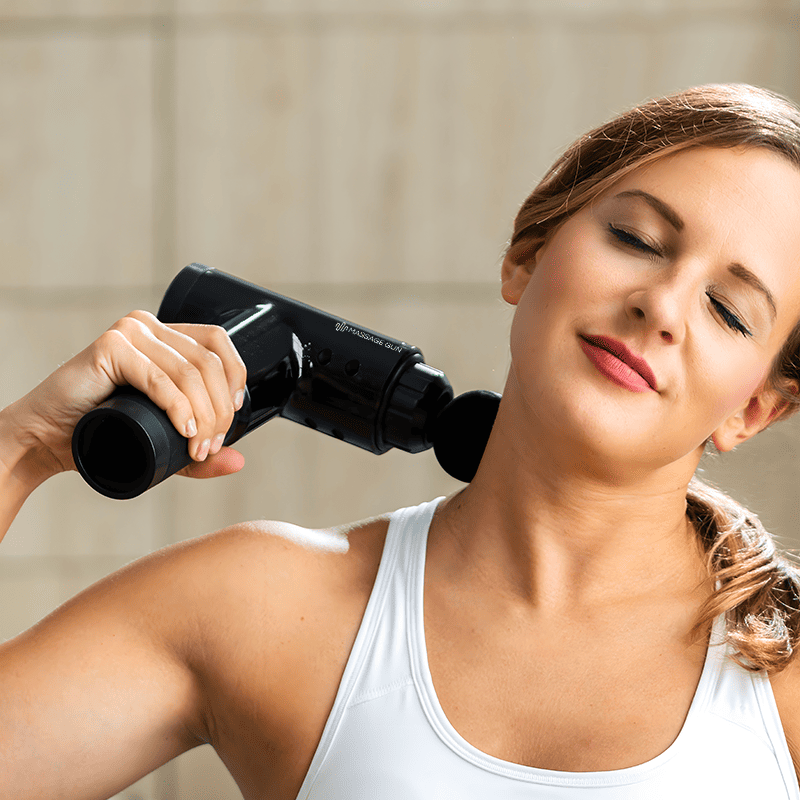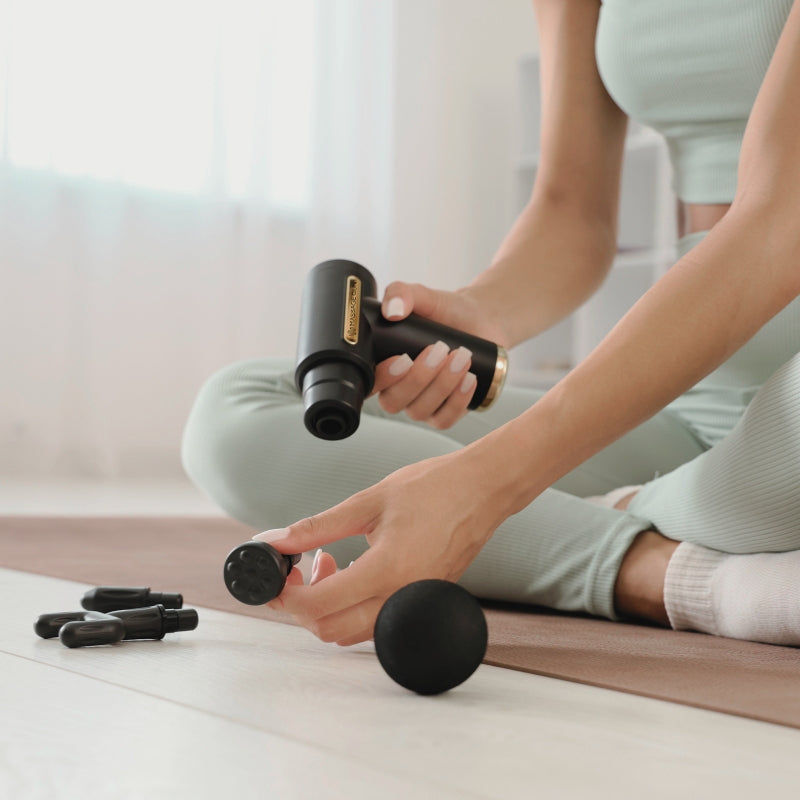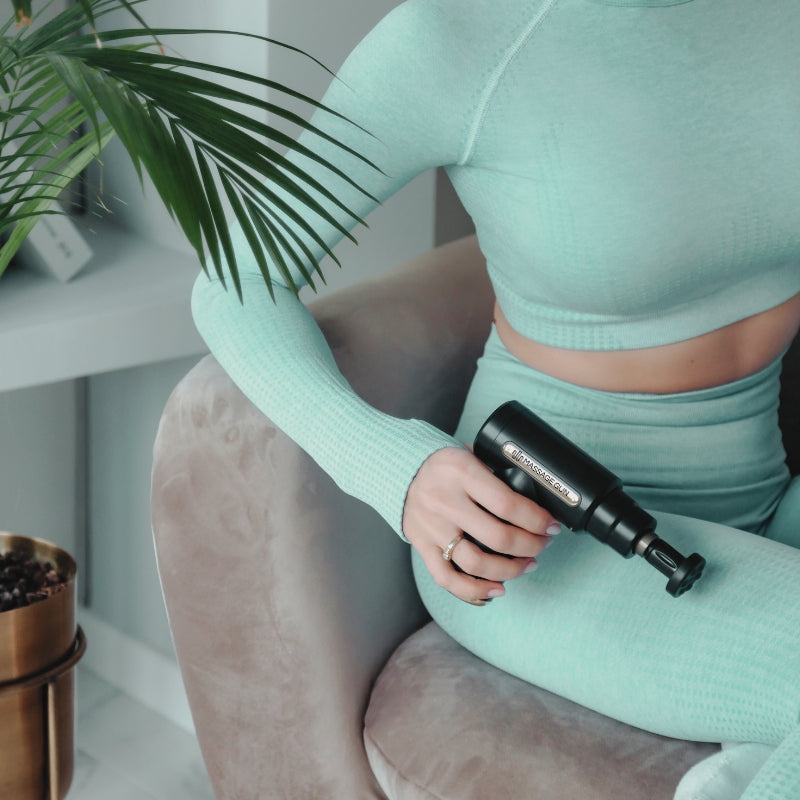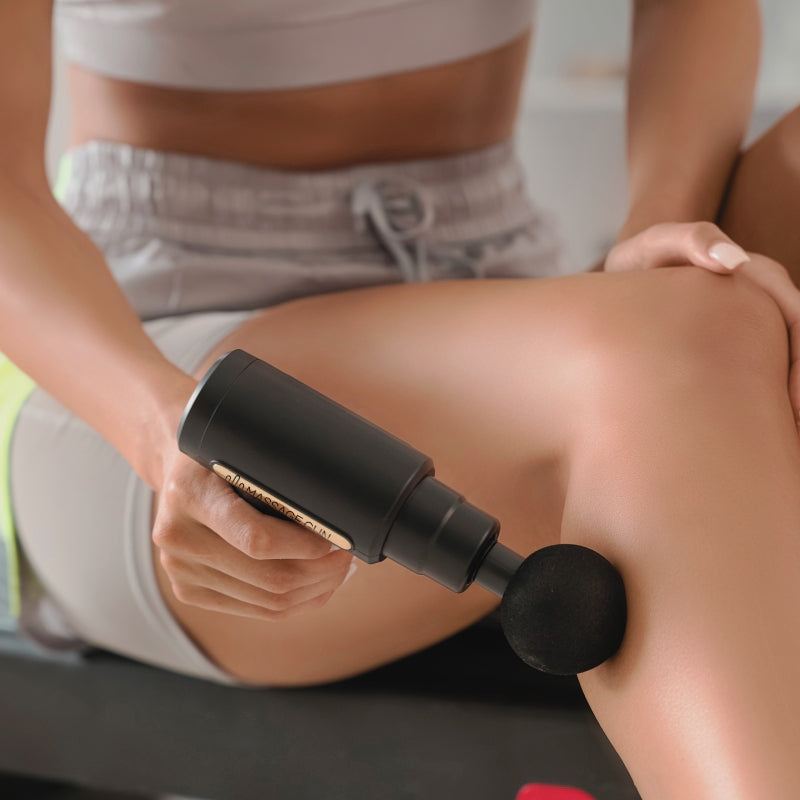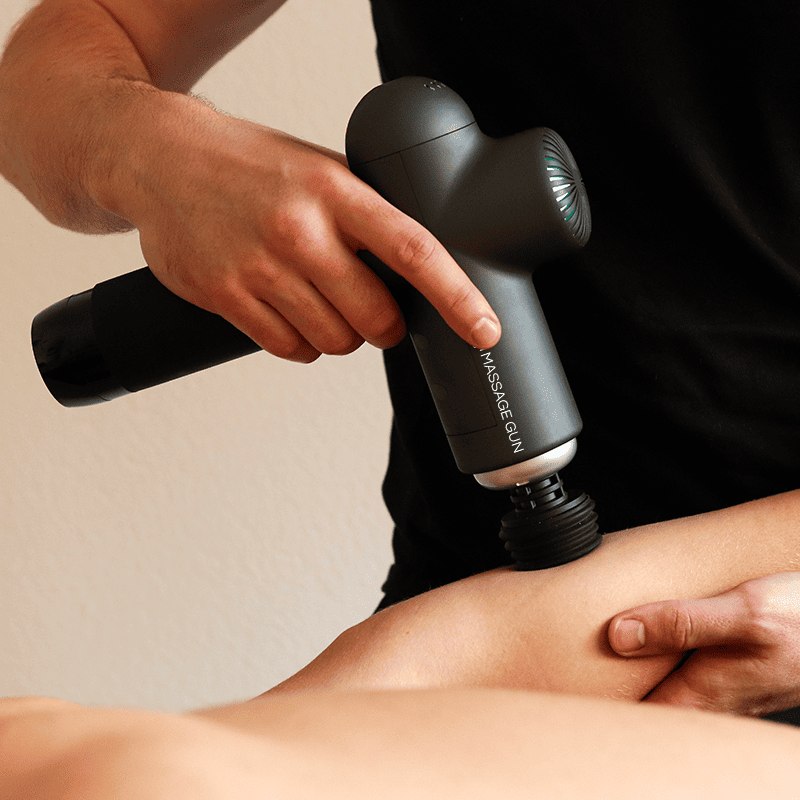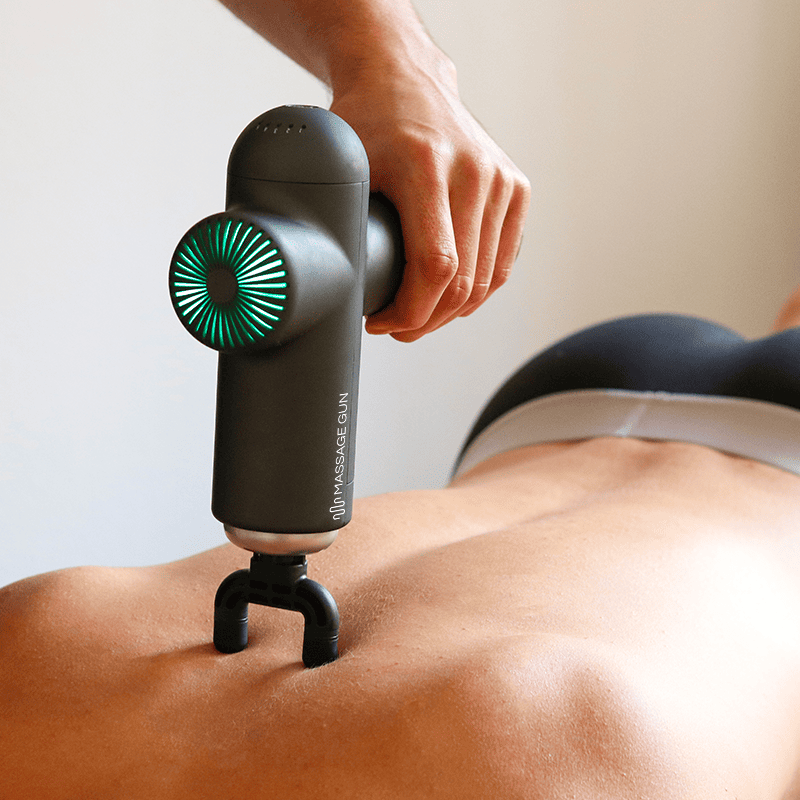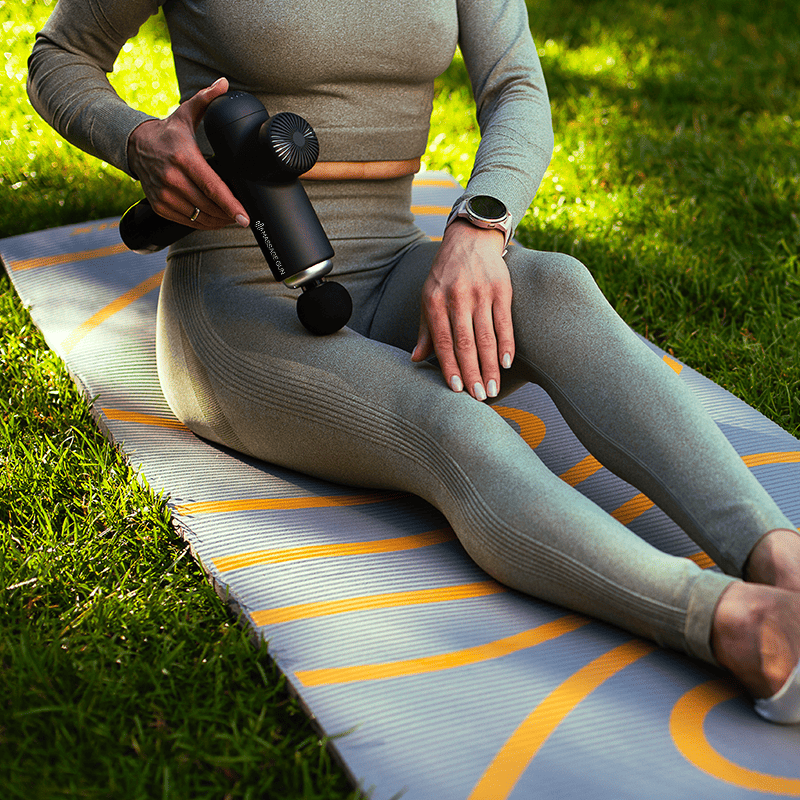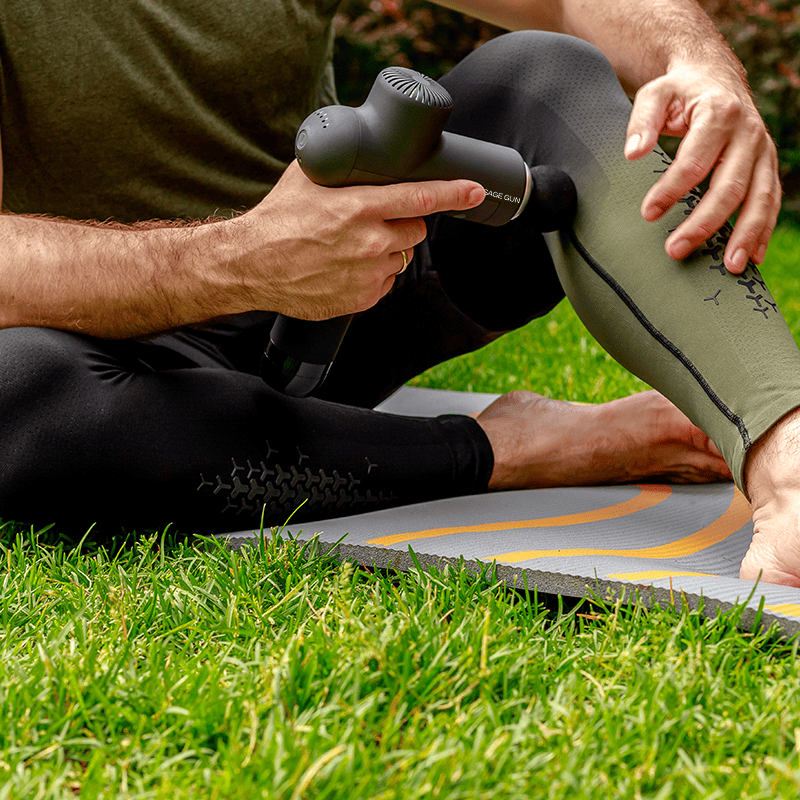Scar tissue forms naturally during the body’s healing process after an injury or surgery, and while it is essential for recovery, it can lead to muscle tension, pain, and reduced mobility. Many people wonder if massage guns can help with this issue by breaking up scar tissue.
The percussive therapy offered by massage guns delivers rapid, deep pulses to the muscle tissue, which may help soften adhesions and increase blood flow to the affected area. However, it’s important to understand how to use a massage gun safely and effectively for managing scar tissue.
How does a massage gun work for scar tissue?

Massage guns operate using percussive therapy, which sends rhythmic pulses deep into the muscle tissue to promote blood circulation and reduce muscle tension. When applied to areas with scar tissue, this device can help loosen adhesions and encourage collagen realignment, making the scar more pliable over time.
While a massage gun won't completely break down scar tissue, it can help soften the area and improve range of motion. The increased blood flow to the region will also help speed up wound healing and reduce pain.
Percussion massage is most effective after the initial stages of healing, once the wound has closed, and normal tissue is beginning to form. Massage guns can target deeper layers of soft tissue, including muscles and fascia, providing relief from the stiffness often associated with hypertrophic scars.
Experts say that consistent massage gun therapy can make a noticeable difference in mobility and comfort.
Benefits of using a massage gun to break up scar tissue

Using a massage gun for scar tissue offers several benefits, particularly when it comes to improving mobility and reducing pain.
The increased blood circulation from percussive therapy brings oxygen and nutrients to the affected area, which supports the healing process. By massaging scar tissue, you can also help to reduce inflammation and prevent chronic pain from developing in the area.
Another key benefit is the reduction of muscle tension and stiffness around the scar tissue, which often limits range of motion.
Regularly using a massage gun can help to loosen soft tissue around joints, improving flexibility and helping you move more freely. Percussion therapy may also aid in reducing the risk of future injuries by ensuring the scar tissue doesn’t restrict mobility.
Potential risks and limitations

While massage guns can help with scar tissue management, it’s essential to make sure you use them correctly to avoid causing harm. Applying too much pressure on a scar too early in the healing process can do more harm than good, leading to tissue damage.
Physical therapists advise waiting until the scar tissue is fully formed, typically after a few weeks, before beginning massage gun therapy. Using a massage gun on scar tissue prematurely could disrupt wound healing or damage the delicate normal tissue forming beneath the surface.
Additionally, massage guns are not suitable for all types of scars, particularly bony scar tissue or hypertrophic scars. If you’re experiencing pain while using the device, stop immediately and consult a health professional. Overusing the massage gun in one area can lead to tendon or joint soreness, especially if the device is applied for extended periods or with excessive pressure.
Best practices for using a massage gun to break up scar tissue

When using a massage gun for scar tissue, it’s important to follow the right technique to maximize benefits and avoid complications. Start with a low-intensity setting and use a massage head that is designed for soft tissue massage, such as a round or flat attachment.
Apply gentle, steady pressure for just a few minutes at a time, being careful not to stay on one area for too long. This approach allows the tissue to absorb the pulses without being overwhelmed by too much pressure.
The best time to use a massage gun is after the scar tissue has fully formed and you're beginning physical therapy to restore mobility. Focus on areas around the scar rather than directly on it to avoid irritating the sensitive skin. Using the device two to three times per week can gradually improve flexibility and reduce muscle stiffness.
Other techniques to complement massage gun therapy

While massage guns are effective, combining them with other treatments can also help with scar tissue management. Foam rolling, manual scar tissue massage, and stretching are useful in tandem with percussive therapy.
For example, foam rolling helps break down scar adhesions while stretching improves joint mobility. Adding heat therapy before a massage gun session can loosen soft tissues and enhance the effectiveness of the treatment.
Incorporating strengthening exercises into your routine can further support your recovery. These exercises improve muscle function and stability, ensuring the scar tissue doesn’t impede your daily activities. Stretching the affected area both before and after using the massage gun can prevent further injury and promote wound healing.
What science says about massage guns and scar tissue?

Scientific studies on massage guns and their effect on scar tissue show promising results. Massage therapy has been proven to increase blood flow, improve mobility, and support healing by realigning collagen fibers in the scar.
Percussive therapy helps target deeper tissue, allowing the body to restore flexibility and reduce inflammation. Experts say that while massage guns won't completely remove scar tissue, they can make it softer and more manageable over time.
However, it’s important to recognize the limitations. Massage guns cannot completely break down scar tissue, especially in cases of hypertrophic scars or deep, bony adhesions. While massage guns can improve mobility and reduce muscle tension, physical therapy and other interventions may be necessary for more severe cases.
Psychological benefits of massage gun therapy for scar tissue

Using a massage gun to manage scar tissue can have significant psychological benefits in addition to physical relief. Many people experience stress, anxiety, or frustration during the healing process, particularly when mobility is restricted by scar tissue.
By incorporating massage gun therapy into your routine, you can take an active role in your recovery, which can boost confidence and motivation.
The rhythmic nature of percussive therapy also helps the nervous system relax, reducing overall stress levels. This can promote better sleep, improve mental clarity, and provide a sense of control over the healing journey. As a result, using a massage gun not only helps you physically but can also enhance your emotional well-being during recovery.
Can a massage gun break up scar tissue?

While a massage gun won’t completely break down scar tissue, it can be a valuable tool for softening adhesions, improving mobility, and reducing pain.
Percussive therapy can help to reduce muscle stiffness, increase blood flow, and promote wound healing in the surrounding tissue. However, for the best results, it should be combined with other therapies like manual massage, stretching, and strength training.
It’s crucial to consult a healthcare professional before starting massage gun therapy, especially if your scar tissue is the result of surgery or a severe injury. By using the right massage gun and following proper techniques, you can safely integrate massage guns into your recovery routine and experience both physical and psychological benefits over time.
Frequently asked questions

1. Can a massage gun break up scar tissue?
Answer: Yes, a massage gun can help break up scar tissue by applying deep tissue massage through percussive therapy. This process improves circulation and helps realign collagen fibers, making the scar softer and more pliable.
However, it may not completely eliminate scar tissues, as they are a natural part of the healing process. Regular use of a massage gun, like a Theragun, can treat the area and improve flexibility over time, but therapist advice is always recommended before starting.
2. How does a massage gun help with scar tissue?
Answer: Massage guns use rapid, deep pulses that reach hard-to-reach areas, promoting blood circulation and helping to break down adhesions in scar tissues. This encourages the body to produce collagen, which can treat the scar tissue and make it more flexible.
The nervous system also responds to the mechanical stimulation, helping relieve pain and stiffness. Therapists often recommend massage guns for scars, particularly around the shoulder and back, but light pressure should be applied at first.
3. How often should I use a massage gun on scar tissue?
Answer: You should use a massage gun on scar tissue two to three times per week, applying light pressure for about 5-10 minutes at a time. Starting slow is important because applying too much pressure or using the device too frequently can develop soreness or aggravate the area.
Regular use will improve circulation and help reduce the tightness of the scar tissue without causing further harm. Therapists recommend consistency, but don't overdo it to avoid delayed onset muscle soreness.
4. Can a massage gun be used on all types of scar tissue?
Answer: While massage guns are safe to use on many types of scar tissue, they are not recommended for every scar. For example, bony scar tissues or hypertrophic scars that are thick and raised may not respond well to percussive therapy.
Additionally, scars in sensitive areas, such as over bone or nerve pathways, require extra caution. Before using a massage gun, consult a therapist to determine whether the scar can be safely treated. Some scars, especially after recent surgery, need more time before treatment begins.
5. Is it safe to use a massage gun on a scar after surgery?
Answer: Massage guns can be helpful for managing scar tissues after surgery, but you should wait until the wound has fully healed before applying percussive therapy. Using the device too soon may disrupt the healing process and cause collagen to form improperly.
It's important to get clearance from your therapist or doctor before using a massage gun after surgery, as they can provide advice on the right time to start and how much pressure to apply.
6. How long does it take to see results from using a massage gun on scar tissue?
Answer: Results from using a massage gun on scar tissue can vary, but generally, you will start seeing improvements in mobility and reduced tension after 4-6 weeks of consistent use. It may take more than this time to see significant softening of older or larger scars.
Regular sessions help realign collagen and improve blood circulation, which feels better over time. Consistency is key, but results depend on the severity of the scar and how long it has been present.
7. What is the best massage gun attachment for scar tissue?
Answer: The best attachment for scar tissue is usually a flat or round head, which provides light, even pressure without overwhelming the area. These attachments are effective for spreading the percussive force over a larger surface, making them great for scars on the shoulder, back, or other large areas.
High-intensity or pointed attachments should be avoided, as they can cause too much pressure and discomfort. Some massage guns, like the Theragun, offer specific attachments designed for deep tissue massage that are safe to use on scarred areas.
8. Can using a massage gun for scar tissue be painful?
Answer: Using a massage gun on scar tissue can be uncomfortable, especially at first, but it should not be overly painful. If you feel sharp pain, stop the session and reassess your technique.
Starting with light pressure and increasing gradually can help minimize discomfort. Applying too much pressure too quickly may worsen the scar or cause further irritation. If you experience persistent pain, consult a therapist for guidance on the proper treatment technique.
9. Can a massage gun make scar tissue worse?
Answer: If misused, a massage gun can make scar tissue worse, especially if it’s applied with too much pressure or used too early in the healing process. Therapists advise waiting until the scar tissue has fully formed and healed before applying percussive therapy.
Using a massage gun on a fresh wound can cause improper collagen formation, potentially leading to thicker, harder scars. Always follow expert advice and start slowly to avoid worsening the condition of the scar.
10. What are the benefits of using a massage gun for scar tissue?
Answer: The benefits of massage guns for scar tissue include increased blood circulation, improved mobility, and reduced muscle tension. Regular use helps to soften the scar, making it more flexible, while also helping with the realignment of collagen fibers.
These tools can also provide relief from stiffness and pain caused by scar tissue, allowing the surrounding muscle to stretch and move more freely. In addition, using a massage gun after workouts helps prevent delayed onset muscle soreness, keeping the body feeling refreshed and improving overall recovery.




